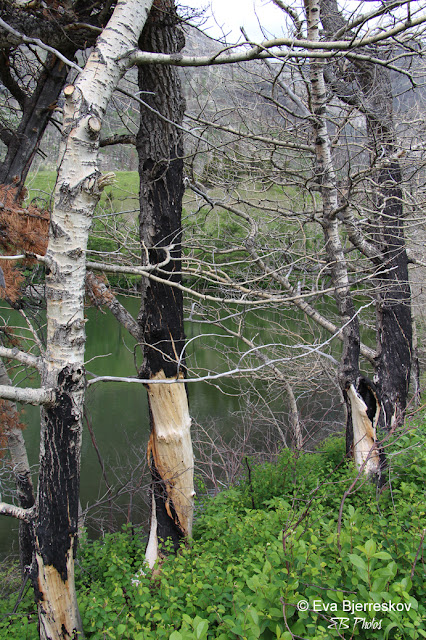What seems at first glance a tragedy can be the beginning of
something new, something unexpected. Take the 2017 Kenow Wildfire in Waterton
National Park, for instance. I had not been to Waterton since the wildfire
until this past June when Jan and I took part in the 16th Waterton
Wildflower Festival for a couple of days. I didn’t know what to expect, really.
I wondered if I would feel the same way as I did last summer driving in BC and
witnessing the wrath of wildfires there. My heart was heavy as I looked at the
black matchsticks on the mountainsides and breathed the smoky air. It was
almost impossible to imagine there was any life left, but such is nature’s life
cycle. Some cones need the high temperature of a fire to release their seed,
and lush green growth appears like magic now that the sun can reach the forest
floor.
The Kenow Wildfire burned about 20,000 hectares of the park,
and while a significant amount of infrastructure was also destroyed and is now
slowly being rebuilt, a surprising revelation was several unknown fire rings
and other signs of indigenous presence in the park. Archeologists and members
of the Nitsitappii explored these previously hidden treasures, thus deepening
their understanding of indigenous life in the area.
I was in awe of the two opposites coming together so
beautifully in Waterton—the charred trees amidst the green grasses, bushes, and
wildflowers; the ancient indigenous sites hidden again after only a year of
exposure. All of it spoke to my soul in so many ways. Sometimes Life takes us
through a wildfire, but once the flames die a new life awaits, and it is
beautiful, scars and all.




